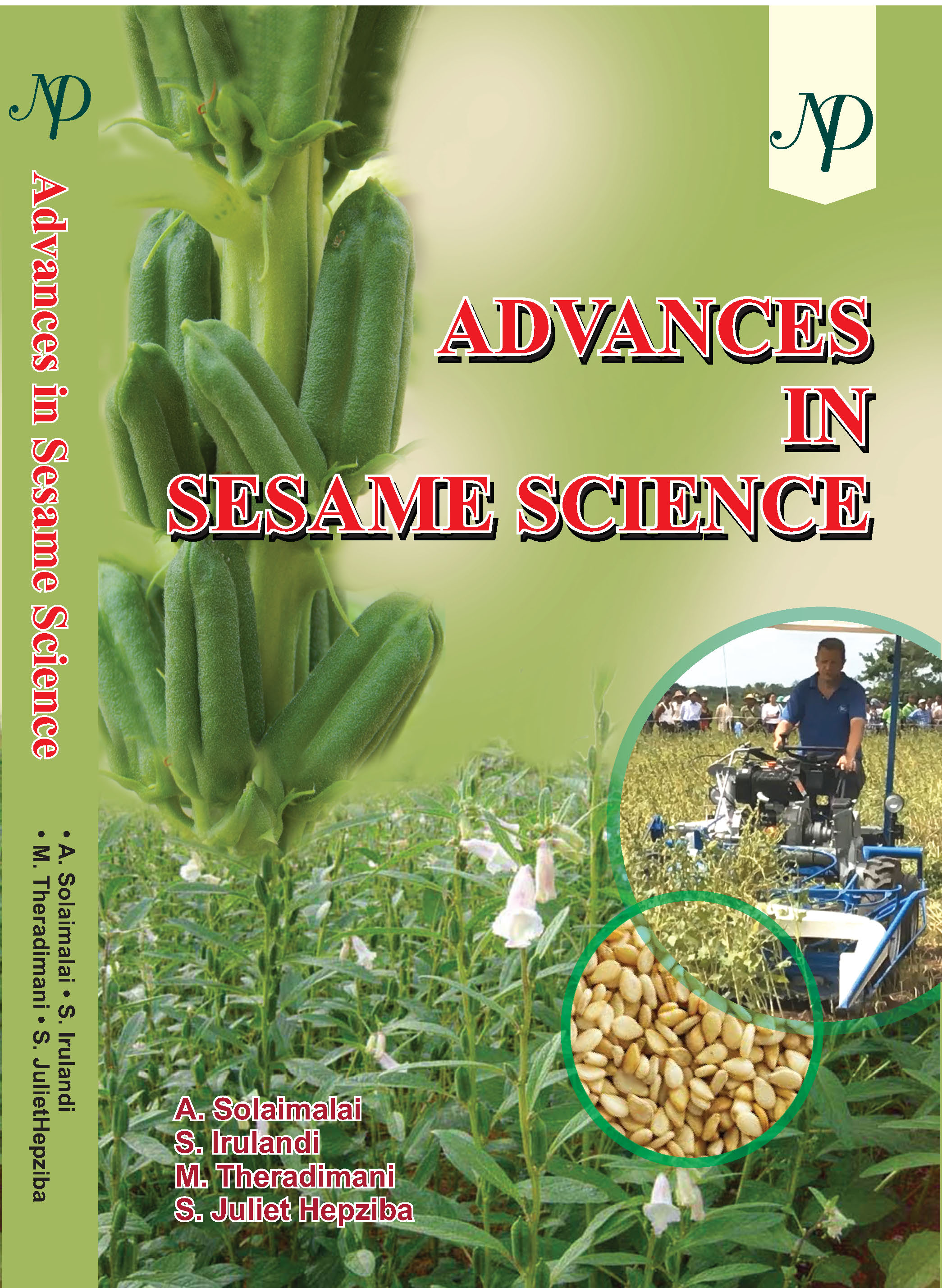Cart
- No products in the cart.
Advances in Sesame Science
Sale!
Advances in Sesame Science
ISBN NO:9789388879194 PAGES :281 PAPER TYPE: HardboundAuthor(s) / Editor(s):
Dr. A. Solaimalai, Dr. S. Irulandi, Dr. M. Theradimani and Dr. S. Juliet Hepziba
Sesame is one of the oldest oilseed crops. Sesame (Sesamum indicum L.) is one of the oldest cultivated plants in the world. It was a highly prized oil crop of Babylon and Assyria at least 4,000 years ago. Today, India and China are the world’s largest producers of sesame, followed by Burma, Sudan, Mexico, Nigeria, Venezuela, Turkey, Uganda and Ethiopia. It is important oil yielding crop with oil content of 40 – 50 %. It is popularly known as gingelly. The sesame seeds/its powder/ its oil is used in Indian dishes a flavouring agent. In India, sesame crop is cultivated as kharif, summer and semi rabi crop. Sesame seeds are tiny, flat oval with a nutty taste and almost invisible crunch. Depending upon the variety, the seed colour is black, white, yellow and red. In India, nearly 75 % of sesame cultivation is during kharif season. Sesame seed is a good source of protein. The seeds help in preventing diabetes and reduce blood pressure. Its seed help in lowering cholesterol and digestion. Its seeds are also helpful in alleviating anaemia, protect liver from alcohol and prevent wrinkles. The seeds help in bone health and prevent osteoporosis. India ranks first in world with 19.47 lakh ha area and 8.66 lakh tonnes production. The average yield of sesame (413 kg/ha) in India is low as compared with other countries in the world (535 kg/ha). The main reasons for low productivity of sesame are its rainfed cultivation in marginal and submarginal lands under poor management and input starved conditions. However, improved varieties and agro production technologies capable of increasing the productivity levels of sesame are now developed for different agro ecological situations in the country. A well managed crop of sesame can yield 1200 - 1500 kg/ha under irrigated and 800 - 1000 kg/ha under rainfed conditions. The crop is grown in almost all parts of the country. More than 85% production of sesame comes from West Bengal, Madhya Pradesh, Rajasthan, Uttar Pradesh, Gujarat, Andhra Pradesh and Telangana.

